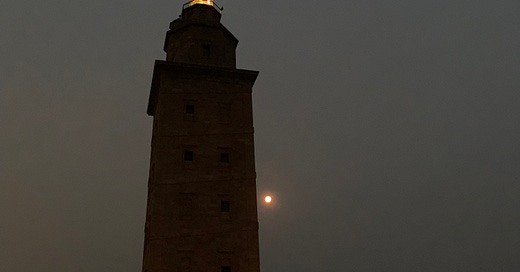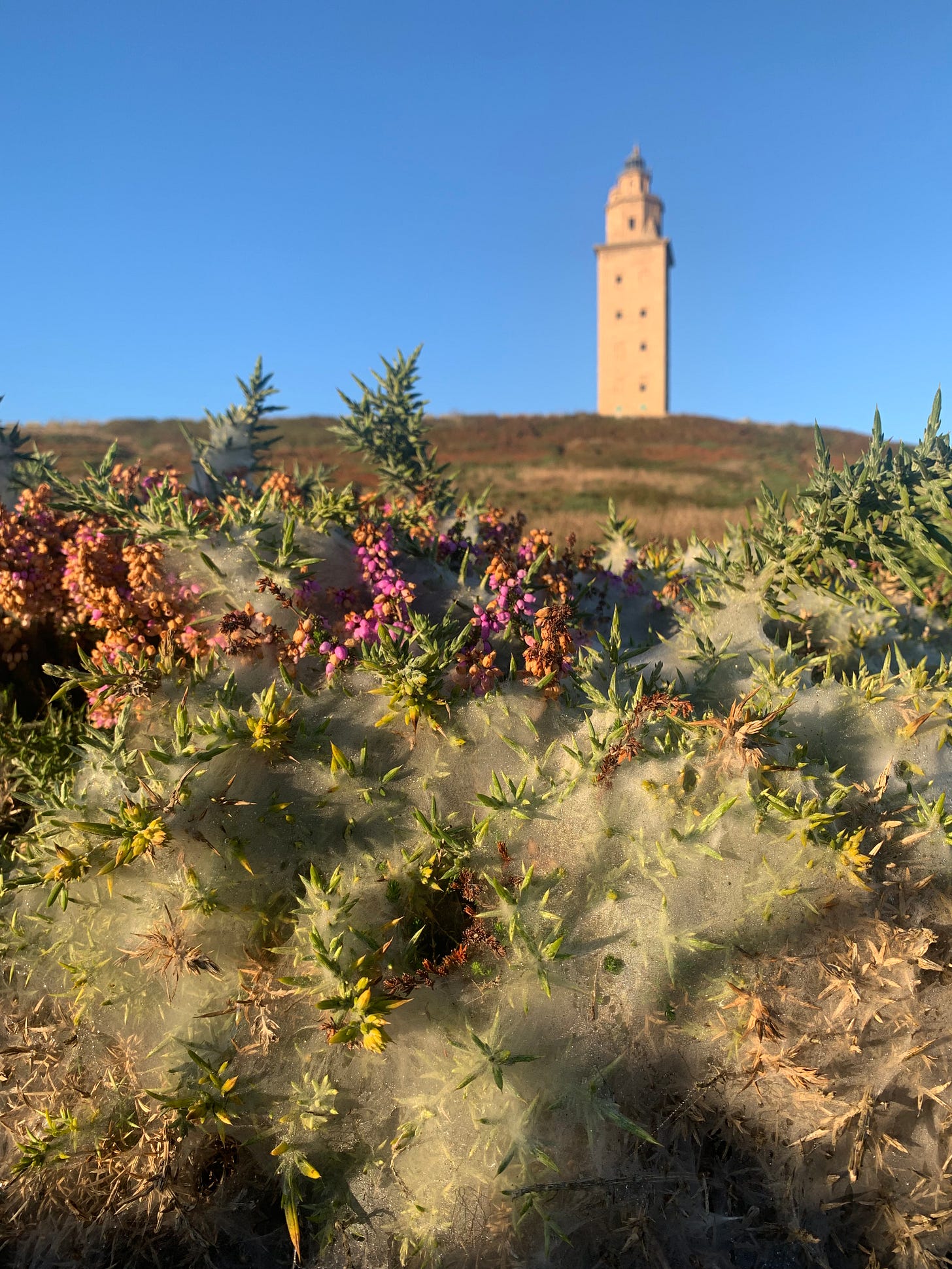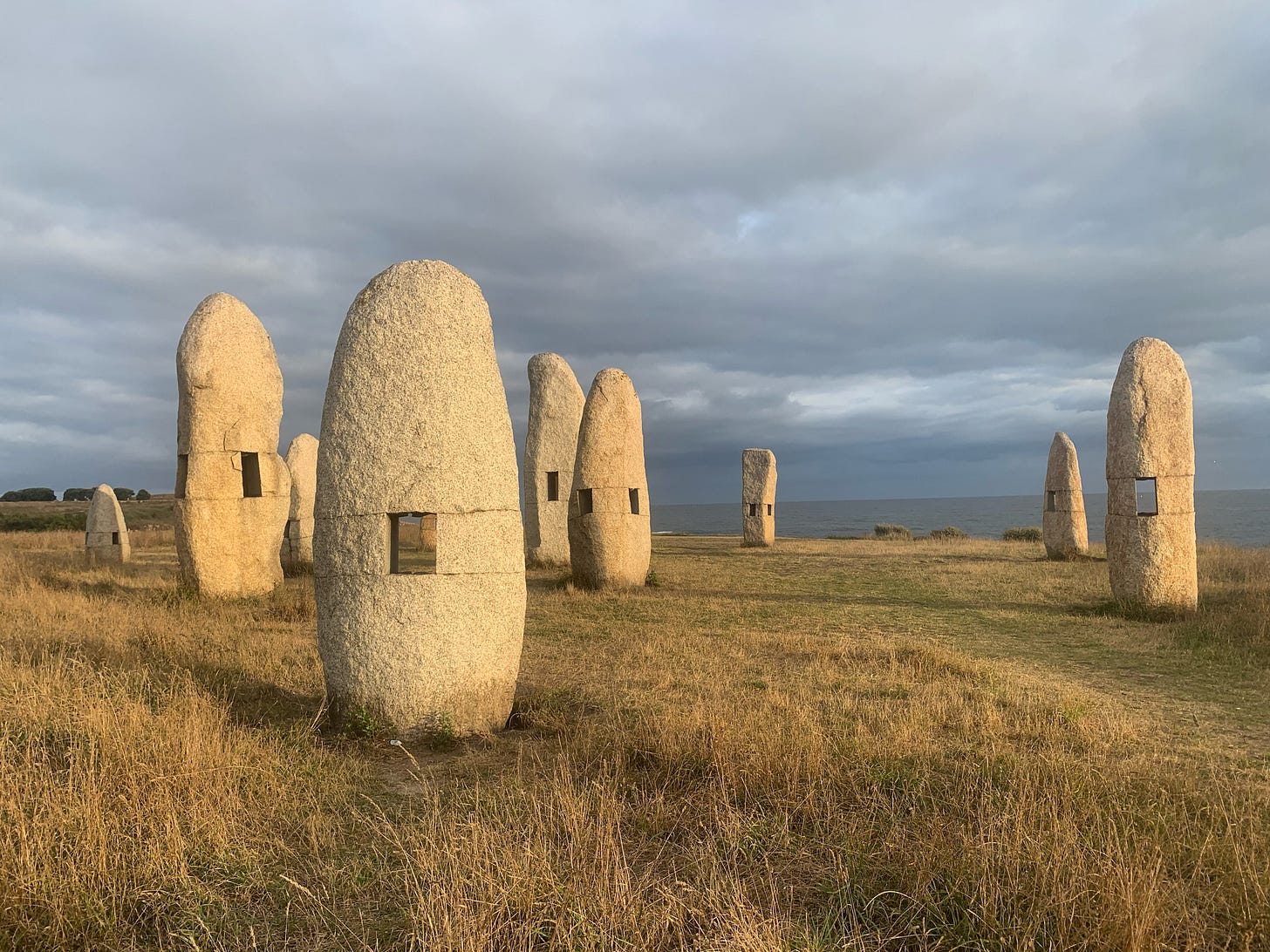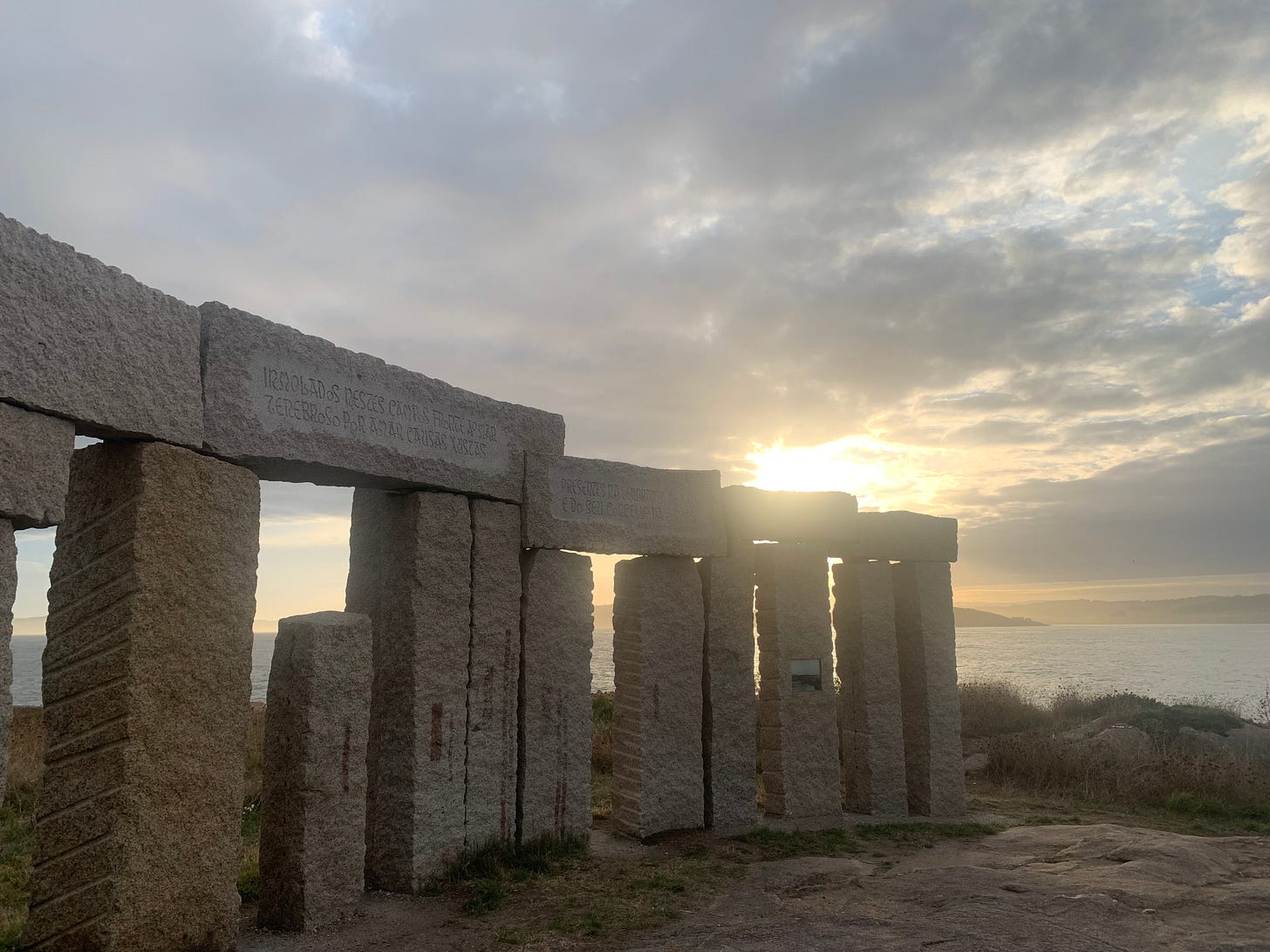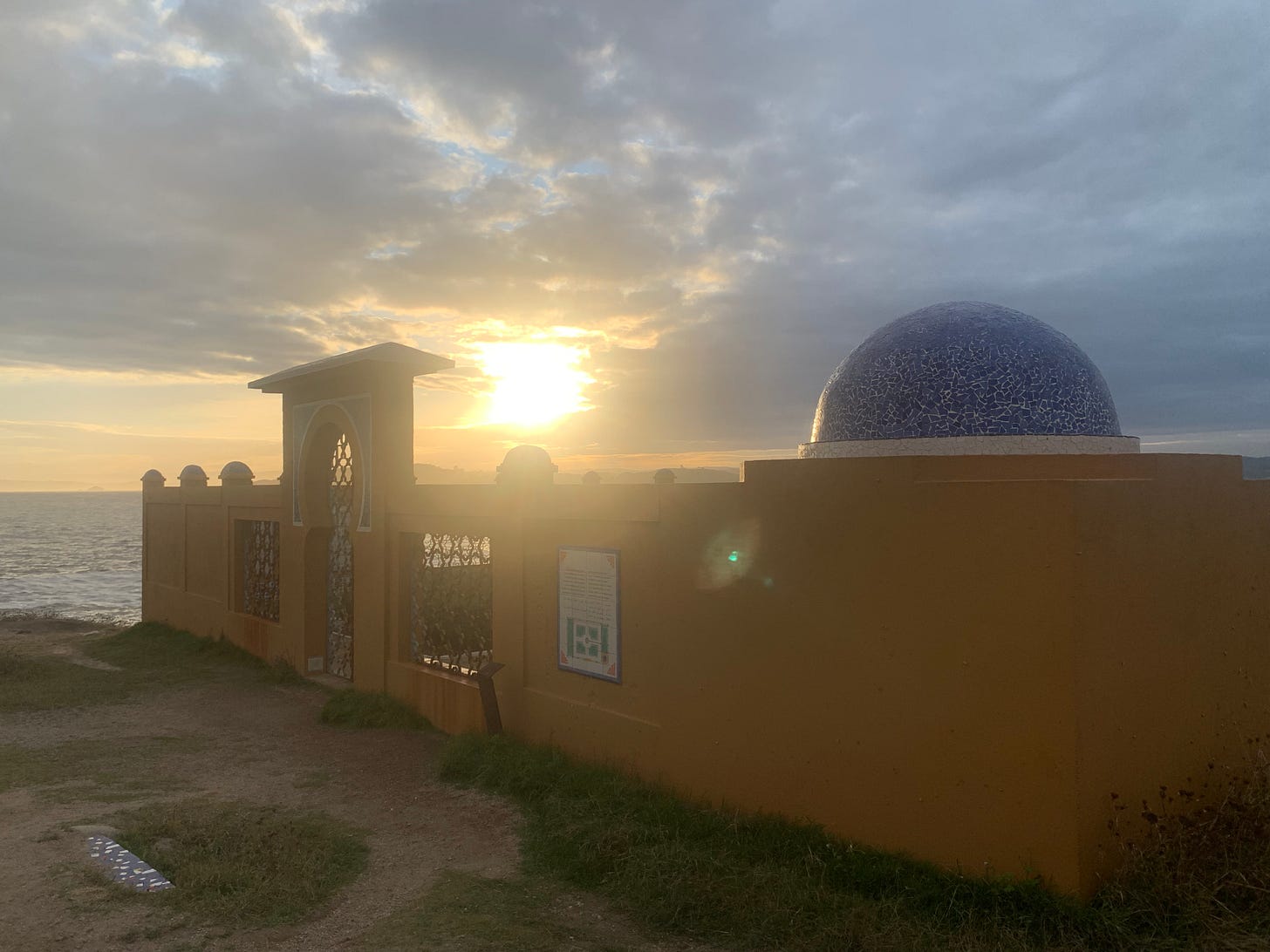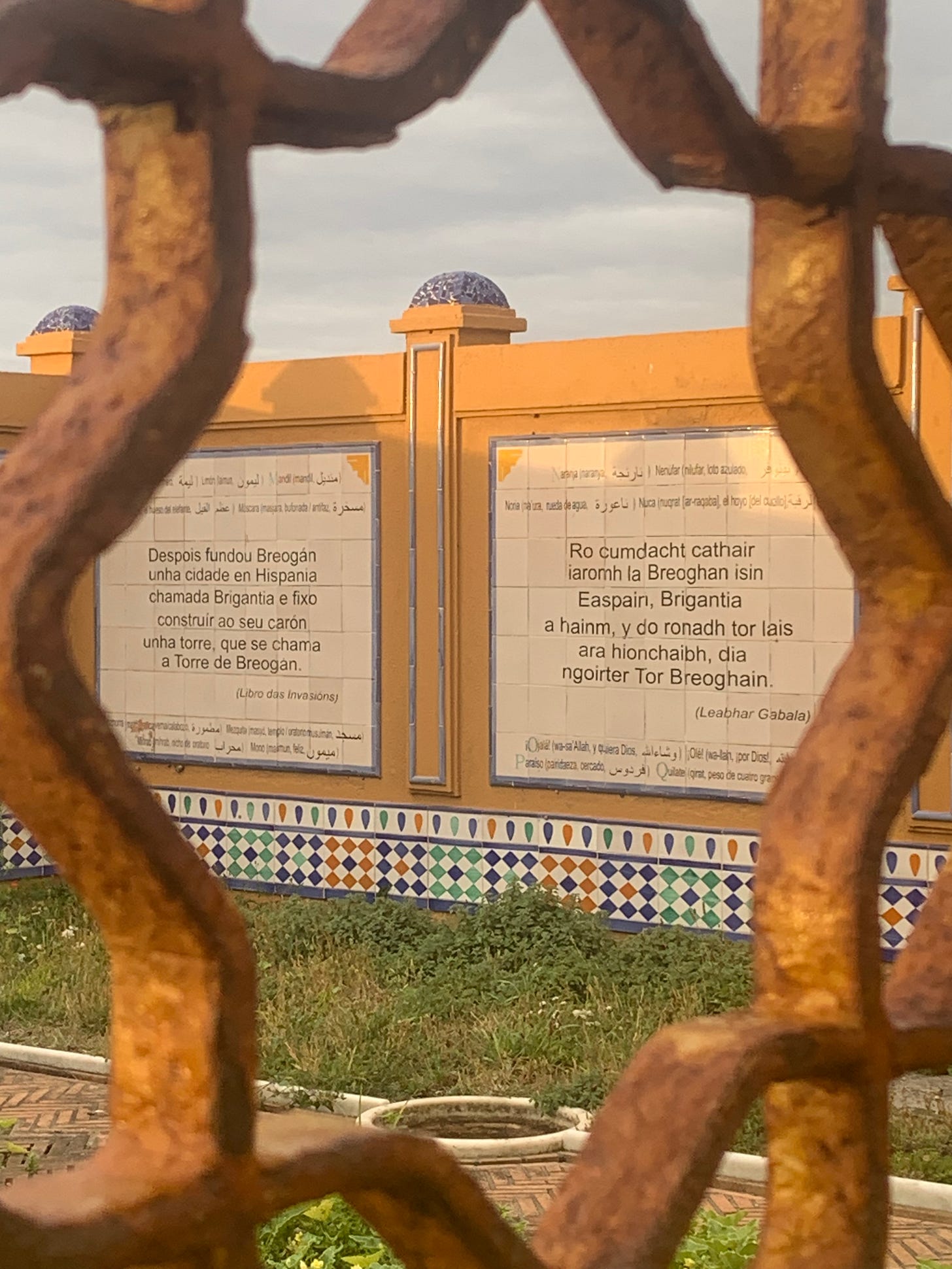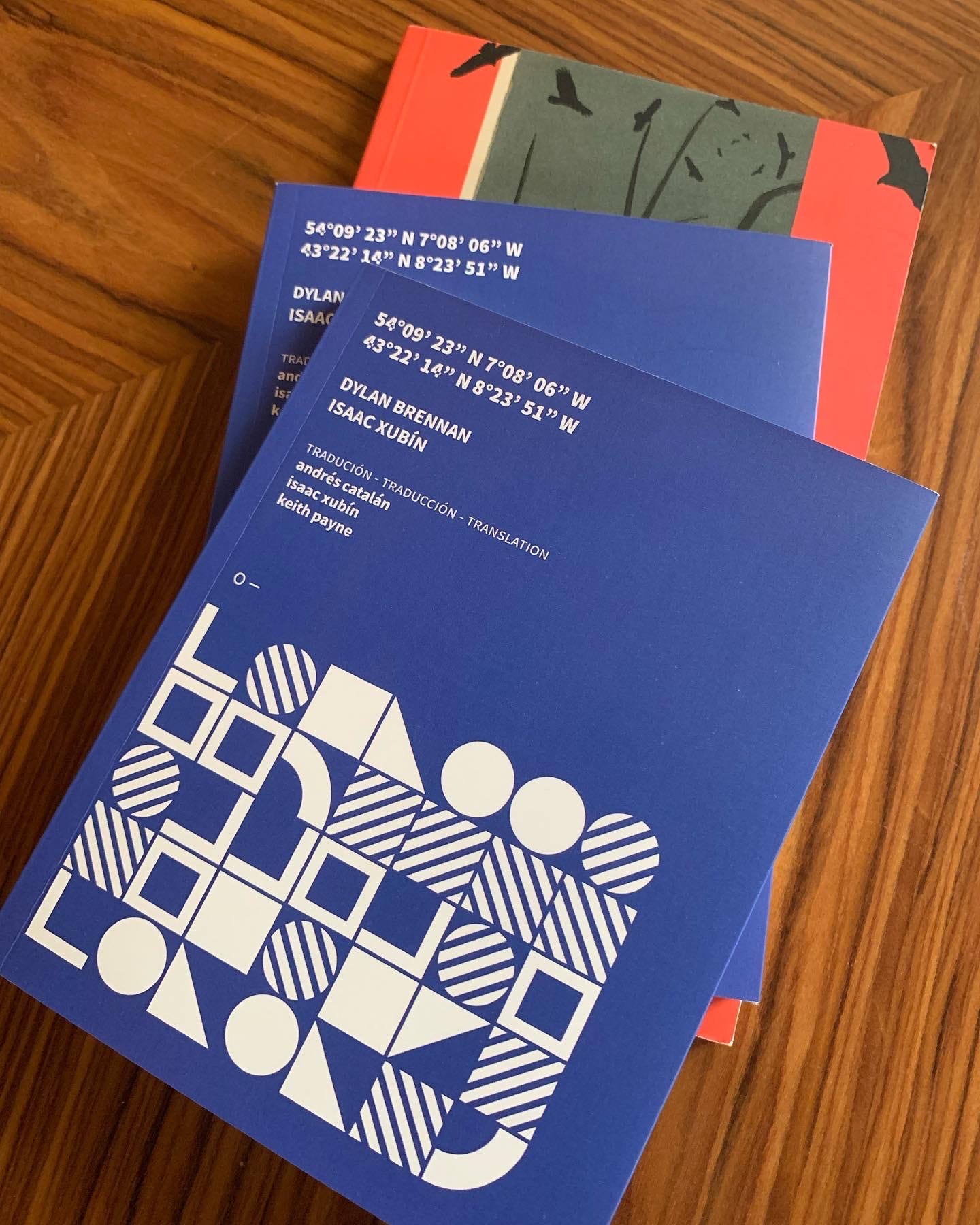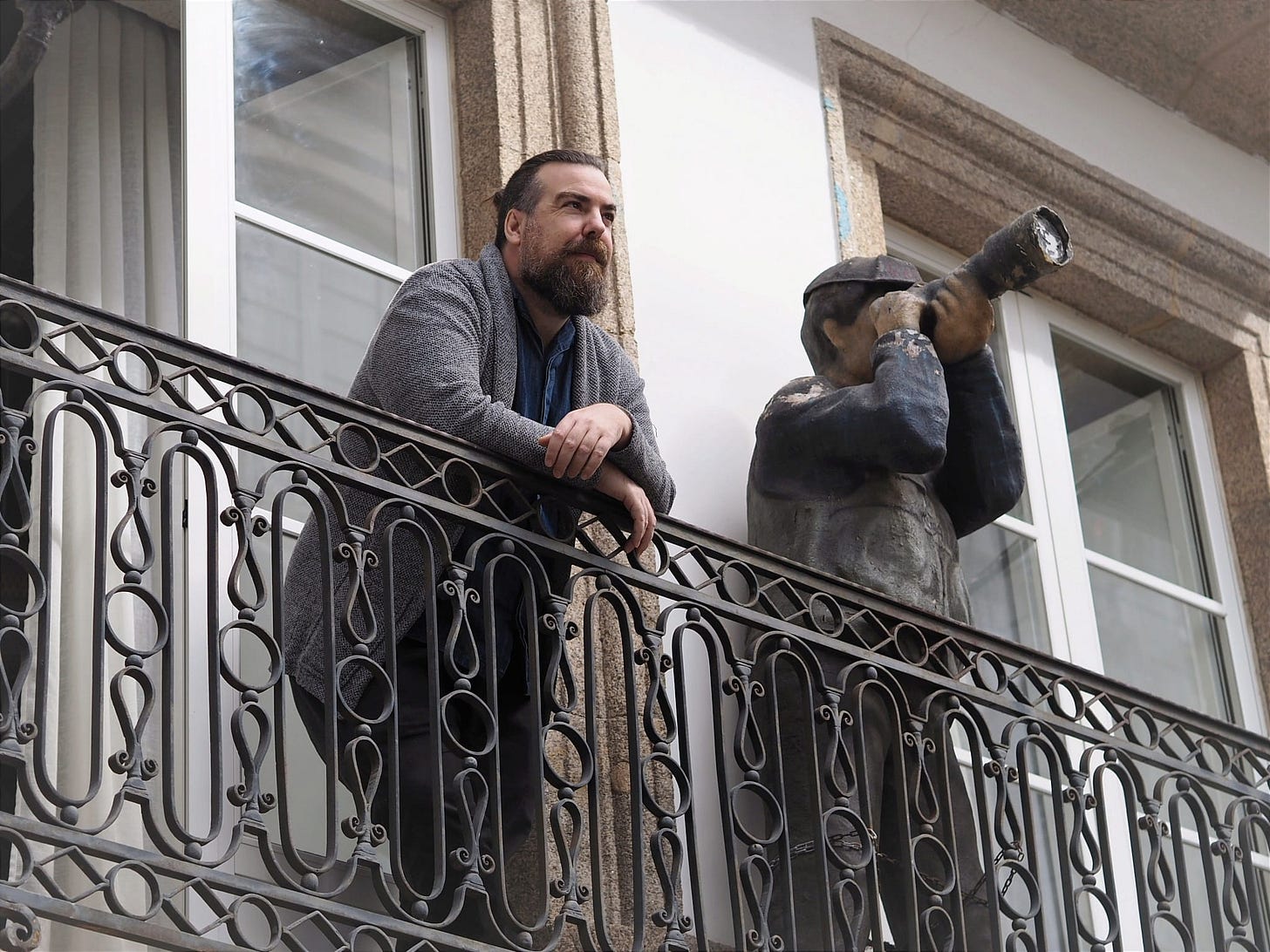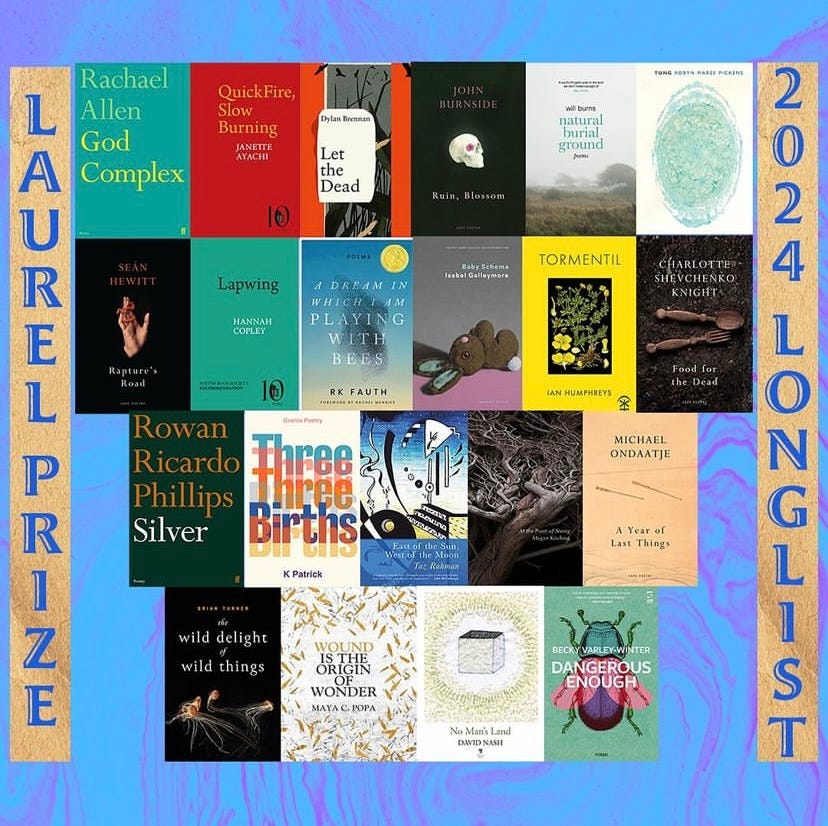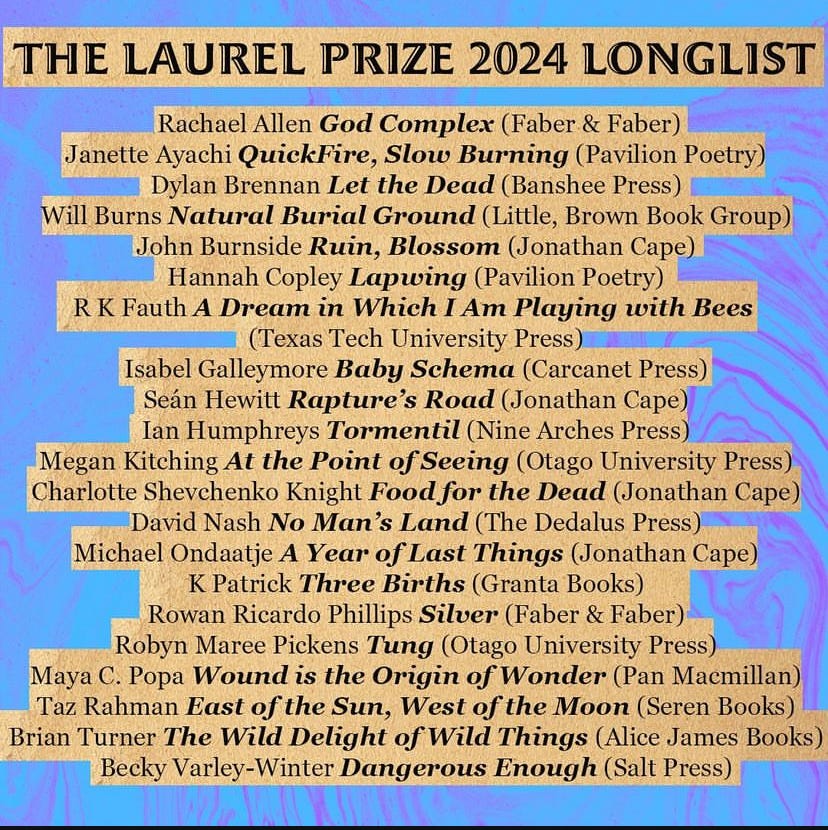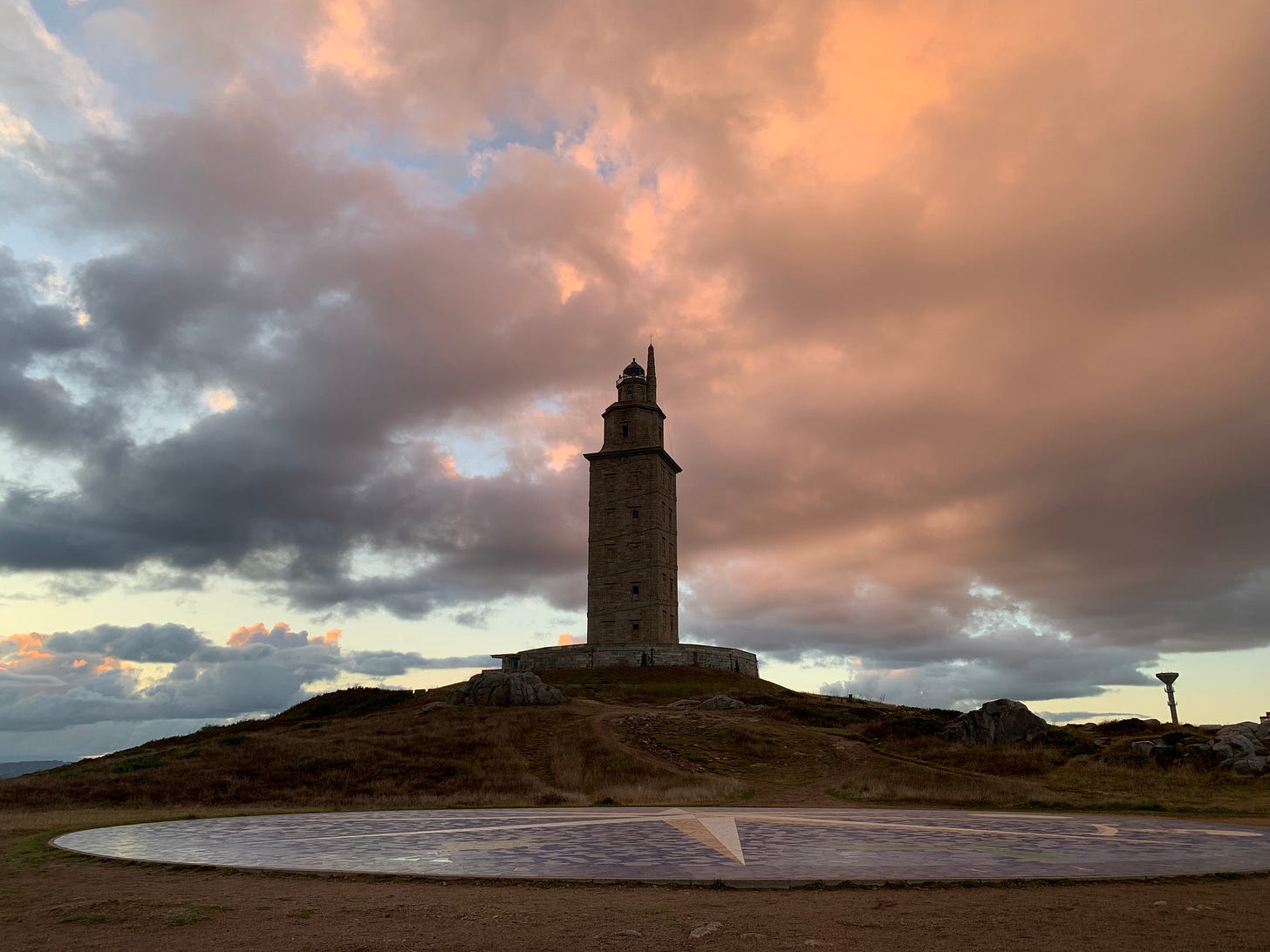Human eyes can, apparently, see furthest on a winter’s evening. It was on one of these clear winter eves that Ith climbed to the top of a tower that was built by his father and caught a glimpse of Ireland on the horizon. Breogan had built the tower in the port city of Brigantia, where the Galician city of A Coruña now stands. His son would eventually be killed in Ireland by the Tuatha Dé Danann while on a kind of scouting mission. Ith was Amergin’s great-uncle and the latter would eventually prove to be a crucial figure in the colonization of Ireland by the Milesian ‘Gaels’. Amergin’s incantatory poem-song purportedly helped quell the Tuatha Dé Danann’s storm-spell and allowed them to make landfall at the Iveragh Peninsula. All this is, of course, according to the 12th century Lebor Gabála Érenn, or ‘Book of the Taking of Ireland’. Though the reality of the lighthouse’s history is quite different to that of Milesian legend, it remains an important monument, the only still-functioning Roman lighthouse in the world. Other legends have been ascribed to this tower, including one that gives it its popular contemporary name of Torre Hercules (Hercules Tower).
When I awoke in A Coruña the first thing I did was to take a walk to the tower at dawn. The entire peninsula that holds the old port city is ringed by a coastal path and, to reach the tower on the eastern side you can walk through a nature and sculpture park that features more recent monuments like the ‘Menhirs for Peace’, a series of perforated monoliths by sculptor Manolo Paz and the Stonehenge-esque monument for those shot dead during the Civil War.
I spotted a yellow structure with a blue dome, a kind of faux-Islamic architecture at the edge of a crag. I learned that it was built to house the remains of Muslim soldiers who fought and died in the Civil War. Those remains have since been moved and the building is now called the Casa de las Palabras, or House of Words. Seemingly permanently closed to the public it contains a small garden and tiles on the walls that document the many Spanish-language words that come from Arabic, words for sugar, pillow, rice etc. Also visible are excerpts from historic texts, in Arabic, Galician, Spanish and even old Irish that pertain to the history of the nearby lighthouse tower.
To walk around this peninsula as the sun comes up is a real treat and highly recommendable to anyone who visits this beautiful city. I’ve spent almost four weeks here as part of the Aodh Ruadh Ó Domhnaill (AROD) Poetry Exchange. I write this as I prepare to leave Galicia. This has been a very productive project for me. In the time I’ve spent here I’ve managed to write a three part poem inspired by the tower and its connections to Ireland, the first part of this has already been accepted for publication. I’ve also used the time to write an essay for Poetry Ireland Review which should be published in December. I finished my commission for an e-pamphlet and a few other bits and pieces which I will post about here when they are available to read. In addition to providing me with a space in which to read and write, the AROD exchange has given me invaluable time to just walk around and think. In other words, to do all the subconscious work that is involved in preparation for the more conscious act of sitting down with the notebook and then keyboard. The AROD exchange involves an Irish poet taking up residence at the Residencia Literaria 1863 in the historic old fishermen’s district of A Coruña and a Galician poet spending September at the magnificent Tyrone Guthrie Centre in Co. Monaghan. This year’s Galician recipient was Isaac Xubín. A publication of work by both poets in English, Galician and Spanish has been produced by Editora Urutau. Sponsors for this exchange include The Tyrone Guthrie Centre, Literature Ireland, Residencia Literaria 1863, Poetry Ireland, Xunta Galicia and the cultural wing of the Deputación da Coruña. As part of the residency I gave talks at universities in Santiago Compostela and in A Coruña. Many thanks to everyone involved in making all of this happen. Especially Yolanda Castaño and AROD poetry exchange chair Keith Payne. Long may it continue.
In other news I was delighted to hear that Let the Dead was longlisted for the Laurel Prize. This will undoubtedly be the only time I will feature on the same list as the autor of The English Patient. I was particularly pleased to feature on this longlist as The Laurel Prize is for English-language poetry with an ecological focus. The Laurel Prize has brought some great poetry to my attention as previous longlistees include poets like Natalie Diaz, Michael Longley and Seán Hewitt (a previous winner, also longlisted this year). Why not use this list to point you towards more interesting poetry? David Nash, for example…See images below for all longlisted poets.
Of course, if you still haven’t bought Let the Dead, you can do so here. This is how you can support me and my work.
I will have news of future publications soonish. And I’ll be on the radio some time in the next few weeks. Subscribe for free so you don’t miss anything. Thanks for reading, liking, subscribing, sharing. All the best for now. D.

